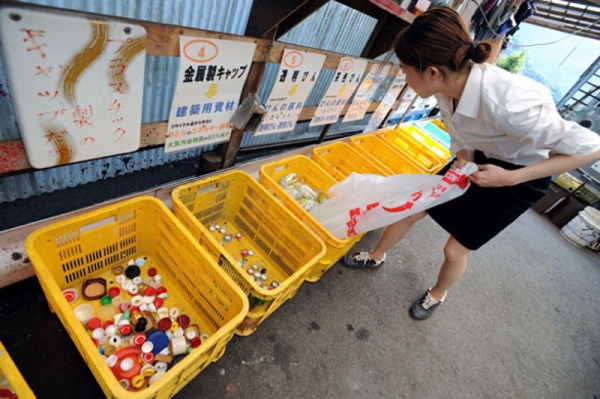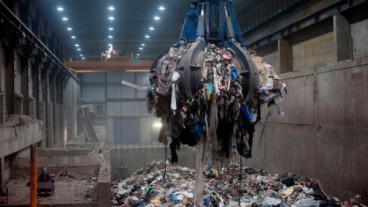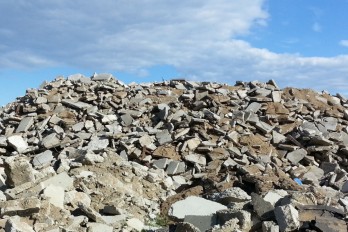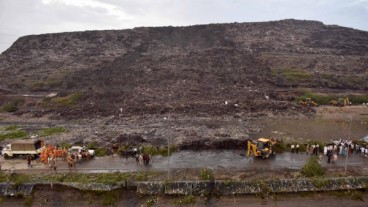A Japanese village aims to become the country’s first 'Zero-Waste' community by 2020

Waste in Kamikatsu is separated in 34 categories!
Waste in Kamikatsu is separated in 34 categories!
Kamikatsu village, in the mountains of Shikoku Island in south-west Japan, declared its no-waste ambition in 2003. Before that, the prevailing waste treatment practice was dumping it into an open fire, with obvious consequences to the environment and public health. Its 1500 residents now recycle about 80 percent of their trash, with only 20 percent going to landfills, and this progress has been achieved in only 12 years! Zero Waste policy has mainly been promoted via Zero Waste Academy, an organization funded and established by local government. In Kamikatsu, there are no garbage trucks, so each resident must wash, sort, and bring his own trash to the Waste Collection Center, where workers of Zero Waste Academy oversee the sorting process, ensuring that each piece of trash goes into the right bin. The process saves the village a third of its former costs compared to waste incineration, according to Akira Sakano, Deputy Chief Officer of the organization. ‘’If you get used to it, it becomes normal’’, says a resident.
The village also has a number of “recycling stores” – known as ‘kuru-kuru’ (circular), where people can leave clothing or furniture they don't want, exchanging their old stuff for free items that others have dropped off. There's even a ‘kuru-kuru’ factory, where local women make products from discarded products, like teddy bears from old kimonos. These facilities are managed by Zero Waste Academy as well. The organization even hosts groups of visiting schoolchildren from the local area and further afield, and recently a growing level of foreign visitors and organizations. An estimated 2,500 visitors a year now travel to Kamikatsu, inspired by its waste-free aspirations.
Source: Onegreenplanet
Source: Onegreenplanet
Media
Want to read more like this story?

New EU legislation on waste management
Jun, 08, 2018 | NewsBased on the principles of circular economy, the new guidelines aim for a drastic reduction of landf...

Due to Sweden’s revolutionary recycling program, the country needs to import 800,000 tns of waste annually to feed its 32 waste-to-energy plants
Oct, 11, 2017 | NewsThe energy goes into a national heating network to heat homes throughout the winter and is also used...

This waste incinerator sets a new capacity record!
Mar, 03, 2016 | NewsLocated in Shenzhen, China, it will be ready by 2020 andits capacity will reach 5000 tn/day! Loca...

Airline food waste: 5.2 million tons were thrown away in 2016 alone
Apr, 19, 2017 | NewsCabin waste costs the industry $500m per year, according to IATA Cabin waste costs the industry $...

New method to transform construction waste into useful materials
Dec, 07, 2018 | NewsA group of German researchers has found a way to manipulate construction waste by turning them into...

A light aircraft flew more than 500 miles using fuel partially originated from plastic waste
Mar, 08, 2017 | NewsThe initiative ‘On Wings of Waste’ aims to raise awareness about plastic waste recycling...

Innovative Food Recycler Turns Leftovers Into Fertilizer in just 24 Hours
Jan, 18, 2017 | NewsAn easy-to-use solution that ensures less food ends up in the landfill An easy-to-use solution th...

A mountain of trash in New Delhi’s Ghazipur landfill
Oct, 19, 2017 | NewsIt is 50m tall, spreads over 70 acres and has received 13 million tons of garbage up to now It is 5...

A new circular economy concept for textiles and chemicals
Sep, 26, 2017 | NewsAn innovative textile recycling plant could recycle 500 tons of waste per year An innovative textil...
Trending

Vertical gardens in Mexico City to combat pollution

Saudi Park Closed After 360 Big Pendulum Ride Crashes to Ground, 23 injured

Characteristics of Load Bearing Masonry Construction

Taipei 101’s impressive tuned mass damper

Dutch greenhouses have revolutionized modern farming

Federal court rules Biden’s offshore drilling ban unlawful


